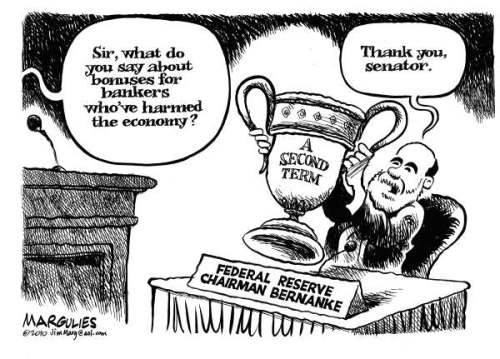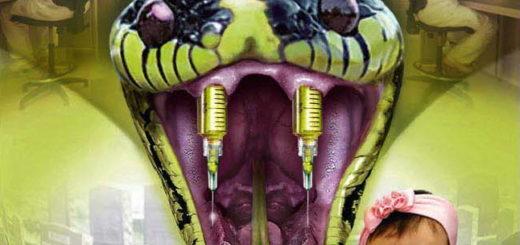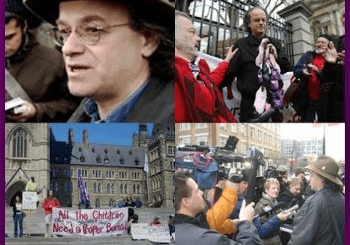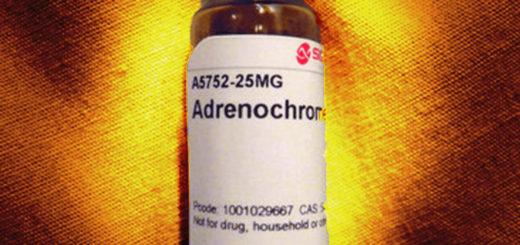If Americans Were Paid the Same Amount the Banksters Were Bailed Out in 2008 We Would Be Paid Almost $10,000 a Month Per Person or $120,000 a Year Entitlement Handout From Our Taxes We Paid
This free cash plan would pay you $1,320 per month and wouldn’t cost the government a cent
Published Tue, Jan 14 20203:44 PM ESTUpdated Wed, Jan 15 202010:00 AM ESTCatherine Clifford@CATCLIFFORDA customer pays with cash at a Best Buy store in Texas, United States, on November 26, 2010.Aaron M. Sprecher | Bloomberg | Getty Images
Presidential candidate Andrew Yang raised $16.5 million in the fourth quarter of 2019 alone. While it’s much less than the $34.5 million Vermont Sen. Bernie Sanders raised, for example, Yang’s campaign has become a surprise success based largely on one idea: giving Americans a $1,000 per month universal basic income payment.
Yang’s platform helped get America talking about universal income again, but his plan is expensive. Now a think tank has laid out a universal basic income plan that would pay more than Yang’s and be zero cost to the government. Here’s what it would look like and who it could actually benefit.
Yang’s plan is expensive
While the idea of a cash paymentfor U.S. citizens over the age of 18 has catapulted Yang from virtual obscurity to a contender (though he’s not appearing in Tuesday night’s Democratic debate in Iowa), it’s very often met with the same criticism: It’s too expensive.
According to one estimate, Yang’s universal basic income would cost $2.8 trillion a year — an estimated 236 million adult citizens in the United States multiplied by a $12,000 yearly payment. (With Yang’s plan welfare and social program beneficiaries could choose to keep their benefits in lieu of receiving the cash payment, so number of adults receiving it could vary.)
To pay for the plan, dubbed the “freedom dividend,” Yang has proposed things like a 10 percent value-added tax (VAT) on the production of goods or services (the majority of countries already have a VAT), a higher capital gains tax and removing the Social Security tax cap.
Comment: Removing the Social Security Tax Cap is a Very good idea! It would completely fund Social Security.
However those numbers don’t add up according to a July analysis of Yang’s plan by Kyle Pomerleau, then the chief economist and vice president of independent nonprofit Tax Foundation (now of the think tank American Enterprise Institute). Pomerleau found that to work, Yang’s VAT would have to increase to 22 percent and the payment would have to decrease to $9,000 per year or $750 per month.11:42Here’s what universal basic income could mean for Americans
Comment: We don’t need to raise taxes for Americans. Just force the Banksters to pay the $26 Trillion back. I believe the money was not paid back and that’s why the Federal Reserve refuses an audit.
(Yang’s campaignsays “the Tax Foundation’s analysis makes some flawed assumptions” and does not take things like resulting economic growth from the payment into account, S.Y. Lee, national press secretary for Yang, tells CNBC Make It. Pomerleau, however, tells CNBC Make It that Yang’s campaign is unreasonably optimistic in the amount of revenue it hopes to get from the tax income on economic growth and about other revenue sources.)
Breakdown of the $26 Trillion the Federal Reserve Handed Out to Save Incompetent, but Rich Investors
Jam12000000amMon, 05 Dec 2011 09:33:32 -080011 10, 2010 by News From the War Against the Middle Class: The World’s Most Accurate Economic Forecaster

Below is letter from US Congressman Alan Grayson. It’s a breakdown of the money the Federal Reserve gave out to save rich investors from their own incompetence. Everybody assumes the Federal Reserve was out to save the banks. That’s not true. The Fed was out to save wealthy investors. If they hadn’t, a lot of rich people would be applying for jobs at Seven-Eleven. A ton of political campaign money would have dried up. A lot of money that corrupts the political system would be gone. A ton of corruption would have died. Goldman Sachs would’ve disappeared into bankruptcy. So while saving rich investors from their own stupidity, the Fed was also ensuring the continued corruption of the corporate wing of the supreme court, congress and the presidency.
There is one other matter I disagree with Congressman Grayson about in regard to the Fed’s actions. The Fed says most of the money it lent out has been paid back. That may not be true. If fact, it’s probably not true. The Fed may, or most likely, have simply cooked its own books to make it appear so. Maybe that’s why corporate profits are at record highs during this period of suppressed demand. How could they have record profits? How could they have paid back $26 trillion in loans in such a short time? That’s almost twice the domestic product of the entire United States. There’s only one answer. It’s not possible. They didn’t pay the money back, at least not most of it. The loans that were not paid back are being used to increase corporate earnings. The higher profits are going toward higher dividends and enhanced share prices for the wealthy. That makes the loans another conduit of unearned income for wealthy investors, as well as another pipeline for government corruption. Corruption is rampant, so don’t think the Fed is immune from it, since it saved the corrupters of Democracy, and likely made them richer in the process.
There’s something significantly more to this scandal and it goes something like this. But first, we need a definition.
A credit default swap is an insurance policy, usually provided on bonds backed by home mortgages. According to some sources, there were $60+ trillion worth of these insurance policies at the beginning of the housing collapse in the summer of 2006.
You didn’t need to own any of these bonds to insure them. It’s the same as being able to insure your neighbor’s house, without their knowledge, even if you don’t know the owner. Needless to say, you’d have a fair degree of incentive to burn your neighbor’s house down.
Institutions such as Goldman Sachs and a ton of unregulated investment firms called hedge funds took out insurance policies on mortgage backed bonds. These people were betting the market would collapse. They were right, even though some of them were selling the bonds up to the housing collapse and even a little after it began, even while telling hapless and really stupid (but wealthy) investors what wonderful investments the bonds were.
This leads me to believe that trillions of those dollars of unrepaid Federal Reserve loans went toward reimbursing the holders of the credit default swaps, which may be why all of those Goldman Sachs and Citicorp executives and hedge fund managers have been getting wonderful bonuses during the economic collapse they helped to craft.
Think about it. The government bailed out the insurance company AIG because of the billions of dollars of mortgage backed bonds it had insured, and that subsequently become worthless when the housing market melted down.
Let’s be clear about one thing. The government didn’t bail out AIG, although they technically did. The government actually bailed out the rich investors by bailing out AIG. These were the foolish folks that had bet that the mortgage-backed-bond market would collapse, and they’d get rich when their insurance policies (credit default swaps) bore fruit. And then came the fat surprise!
The entire insurance industry of planet Earth couldn’t possibly pay out $60+ trillion to those who’d bet on the housing market collapse. That means a bunch of rich fat cats made a bet on a market (credit default swaps) that could not sustain itself. They lost their shirts because they were dumber than a cat’s fart. Unless, of course, they expected the Fed to save their worthless hides.
The Fed’s rescue was most likely negotiated by Fed officials and Wall Street executives in one or more secret meetings. It’s possible executives simply begged Bernanke for financial salvation and he relented, but that’s unlikely.
Either way, the Fed stepped in to save their extraordinarily wealthy friends, like Goldman Sachs, their investors and numerous hedge funds.
In other words, if you were rich and dumb and placed your money in a market that was doomed to collapse, like the credit default swap market, you should have lost all of the premiums that you paid out. Coincidentally, although sizable (probably exceeding a trillion dollars), the money paid out in premiums represented only a fraction of the $60 trillion sized market.
The Federal Reserve doesn’t serve the common people or the nation. The officials at the Fed have only one thing in mind; to serve the wealthy people that control them.
So let me restate this succinctly: The Fed has paid out trillions of dollars in alleged loans and claimed they were paid back when it was impossible to have done so. The recipients of the money, the richest of people and investment companies that control the world’s most powerful government, also had to have cooked their books in order to make it appear they paid the money back.
That means they couldn’t have paid any taxes on trillions of dollars of free income provided by the Federal Reserve Bank.
Ben Bernanke is part of this crime wave. We’re also talking about hedge fund managers, investors of all stripes and sizes, basically, a ton of rich people. Obama may have even known of this crime. Why else would the Department of Justice be totally blind to this issue? Where is the investigation? Even if we had one, the crimes would be white washed in an ocean of corruption.
But then there’s the fear factor. If common people even knew there was an investigation, the demands for justice would be massive since most people now know or suspect how corrupt the financial sector and the government are, and how much and how tightly they are entwined.
I’m no attorney, but I can kind of guess what crimes have been committed, at least some of them. How about tax evasion? How about Accessory to Tax Evasion? How about obstruction of justice? Racketeering? Money laundering? And probably lots more. If you’re rich, you own enough politicians and Supreme Court and other justices that no charges will ever be brought against you.
The folks at http://criminal.laws.com/rico define racketeering this way, “Racketeering is classified as a crime that takes place through or while undertaking an illegal business or commercial venture. The activity of Racketeering is neither specific to solely illegal nor legal business operations. A wide array of the types of Racketeering exists.”
Goldman Sachs and other banks are businesses. So are hedge funds. So racketeering applies.
Criminal.laws.com also defines money laundering as “a financially-based criminal act that is employed in order to purposely conceal, misrepresent, and disguise all applicable nature or details with regard to financial income in the form of monies. Money Laundering can be instituted in order to attempt to hide the source of generation of a particular flow of income or to mask the process of the spending of monies. Furthermore, Money Laundering can be utilized in order to mislead investigations involved in the determination of the particular spending pattern or trend with regard to an individual or entity. While Money Laundering is not specific to commercial activity, it most commonly takes place within the scope of business activity.”
Money laundering clearly applies and it should be obvious to anybody with a second grade education.
Ben Bernanke is up to his neck in these crimes. Perhaps more realistically, he buried himself completely in it.
Crimes have been committed on a massive scale, but our government is totally corrupted by big money, and that’s especially true of the corporate wing of the Supreme Court. So don’t expect anything to happen soon. Join the Occupy Movement. Get Busy. Get Politically active if you want to see justice served, if you want to see our government washed clean of corruption.
Anyway, the link below takes a look at what President Obama may or may not have known about the $26 trillion and how his knowledge impacted one of the policies he proposed. The link below that is important information about the Federal Reserve. Enhancing corporate profits was not the only thing done with the unrepaid money; the third link below goes into that issue. Much of the money went to pay off rich people holding credit default swaps.
Congressman Grayson’s letter is below the third link.
The enormous implications of the bailout to the 99 percent. Click here for an analysis of what Obama may have known about the $26 trillion
Who Holds the Federal Reserve Responsible for Its Actions?
Why Isn’t Federal Reserve Chairman Ben Bernanke in Prison for Life?
Dear John,
I think it’s fair to say that Congressman Ron Paul and I are the parents of the GAO’s audit of the Federal Reserve. And I say that knowing full well that Dr. Paul has somewhat complicated views regarding gay marriage.
Anyway, one of our love children is a massive 251-page GAO report technocratically entitled “Opportunities Exist to Strengthen Policies and Processes for Managing Emergency Assistance.” It is almost as weighty as that 13-lb. baby born in Germany last week, named Jihad. It also is the first independent audit of the Federal Reserve in the Fed’s 99-year history.
Feel free to take a look at it yourself, it’s right here. It documents Wall Street bailouts by the Fed that dwarf the $700 billion TARP, and everything else you’ve heard about.
I wouldn’t want anyone to think that I’m dramatizing or amplifying what this GAO report says, so I’m just going to list some of my favorite parts, by page number.
Page 131 – The total lending for the Fed’s “broad-based emergency programs” was $16,115,000,000,000. That’s right, more than $16 trillion. The four largest recipients, Citigroup, Morgan Stanley, Merrill Lynch and Bank of America, received more than a trillion dollars each. The 5th largest recipient was Barclays PLC. The 8th was the Royal Bank of Scotland Group, PLC. The 9th was Deutsche Bank AG. The 10th was UBS AG. These four institutions each got between a quarter of a trillion and a trillion dollars. None of them is an American bank.
Pages 133 & 137 – Some of these “broad-based emergency program” loans were long-term, and some were short-term. But the “term-adjusted borrowing” was equivalent to a total of $1,139,000,000,000 more than one year. That’s more than $1 trillion out the door. Lending for these programs in fact peaked at more than $1 trillion.
Pages 135 & 196 – Sixty percent of the $738 billion “Commercial Paper Funding Facility” went to the subsidiaries of foreign banks. 36% of the $71 billion Term Asset-Backed Securities Loan Facility also went to subsidiaries of foreign banks.
Page 205 – Separate and apart from these “broad-based emergency program” loans were another $10,057,000,000,000 in “currency swaps.” In the “currency swaps,” the Fed handed dollars to foreign central banks, no strings attached, to fund bailouts in other countries. The Fed’s only “collateral” was a corresponding amount of foreign currency, which never left the Fed’s books (even to be deposited to earn interest), plus a promise to repay. But the Fed agreed to give back the foreign currency at the original exchange rate, even if the foreign currency appreciated in value during the period of the swap. These currency swaps and the “broad-based emergency program” loans, together, totaled more than $26 trillion. That’s almost $100,000 for every man, woman, and child in America. That’s an amount equal to more than seven years of federal spending — on the military, Social Security, Medicare, Medicaid, interest on the debt, and everything else. And around twice American’s total GNP.
Page 201 – Here again, these “swaps” were of varying length, but on Dec. 4, 2008, there were $588,000,000,000 outstanding. That’s almost $2,000 for every American. All sent to foreign countries. That’s more than twenty times as much as our foreign aid budget.
Page 129 – In October 2008, the Fed gave $60,000,000,000 to the Swiss National Bank with the specific understanding that the money would be used to bail out UBS, a Swiss bank. Not an American bank. A Swiss bank.
Pages 3 & 4 – In addition to the “broad-based programs,” and in addition to the “currency swaps,” there have been hundreds of billions of dollars in Fed loans called “assistance to individual institutions.” This has included Bear Stearns, AIG, Citigroup, Bank of America, and “some primary dealers.” The Fed decided unilaterally who received this “assistance,” and who didn’t.
Pages 101 & 173 – You may have heard somewhere that these were riskless transactions, where the Fed always had enough collateral to avoid losses. Not true. The “Maiden Lane I” bailout fund was in the hole for almost two years.
Page 4 – You also may have heard somewhere that all this money was paid back. Not true. The GAO lists five Fed bailout programs that still have amounts outstanding, including $909,000,000,000 (just under a trillion dollars) for the Fed’s Agency Mortgage-Backed Securities Purchase Program alone. That’s almost $3,000 for every American.
Page 126 – In contemporaneous documents, the Fed apparently did not even take a stab at explaining why it helped some banks (like Goldman Sachs and Morgan Stanley) and not others. After the fact, the Fed referred vaguely to “strains in the financial markets,” “transitional credit,” and the Fed’s all-time favorite rationale for everything it does, “increasing liquidity.”
81 different places in the GAO report – The Fed applied nothing even resembling a consistent policy toward valuing the assets that it acquired. Sometimes it asked its counterparty to take a “haircut” (discount), sometimes it didn’t. Having read the whole report, I see no rhyme or reason to those decisions, with billions upon billions of dollars at stake.
Page 2 – As massive as these enumerated Fed bailouts were, there were yet more. The GAO did not even endeavor to analyze the Fed’s discount window lending, or its single-tranche term repurchase agreements.
Pages 13 & 14 – And the Fed wasn’t the only one bailing out Wall Street, of course. On top of what the Fed did, there was the $700,000,000,000 TARP program authorized by Congress (which I voted against). The Federal Deposit Insurance Corp. (FDIC) also provided a federal guarantee for $600,000,000,000 in bonds issued by Wall Street.
There is one thing that I’d like to add to this, which isn’t in the GAO’s report. All this is something new, very new. For the first 96 years of the Fed’s existence, the Fed’s primary market activities were to buy or sell U.S. Treasury bonds (to change the money supply), and to lend at the “discount window.” Neither of these activities permitted the Fed to play favorites. But the programs that the GAO audited are fundamentally different. They allowed the Fed to choose winners and losers.
So what does all this mean? Here are some short observations:
(1) In the case of TARP, at least The People’s representatives got a vote. In the case of the Fed’s bailouts, which were roughly 20 times as substantial, there was never any vote. Unelected functionaries, with all sorts of ties to Wall Street, handed out trillions of dollars to Wall Street. That’s not how a democracy should function, or even can function.
(2) The notion that this was all without risk, just because the Fed can keep printing money, is both laughable and cryable (if that were a word). Leaving aside the example of Germany’s hyperinflation in 1923, we have the more recent examples of Iceland (75% of GNP gone when the central bank took over three failed banks) and Ireland (100% of GNP gone when the central bank tried to rescue property firms).
(3) In the same way that American troops cannot act as police officers for the world, our central bank cannot act as piggy bank for the world. If the European Central Bank wants to bail out UBS, fine. But there is no reason why our money should be involved in that.
(4) For the Fed to pick and choose among aid recipients, and then pick and choose who takes a “haircut” and who doesn’t, is both corporate welfare and socialism. The Fed is a central bank, not a barber shop.
(5) The main, if not the sole, qualification for getting help from the Fed was to have lost huge amounts of money. The Fed bailouts rewarded failure, and penalized success. (If you don’t believe me, ask Jamie Dimon at JP Morgan.) The Fed helped the losers to squander and destroy even more capital.
(6) During all the time that the Fed was stuffing money into the pockets of failed banks, many Americans couldn’t borrow a dime for a home, a car, or anything else. If the Fed had extended $26 trillion in credit to the American people instead of Wall Street, would there be 24 million Americans today who can’t find a full-time job?
Share this:
There is a plan that won’t cost the government anything
There is, however, a universal basic income plan that is budget neutral, meaning it does not raise or lower the spending of the government.
The plan, which is only theoretical, was released by the American Enterprise Institute (where Pomerleau now works) on Jan. 6 and provides for a universal basic income payment of $15,845 per year, or $1,320 a month, to U.S. residents 18 or older. For individuals under 18, the plan provides for a $7,923 per year payment, or $660 per month.
A graphic visualization of the variable impact of a budget-neutral UBI as described by AEI across income levels. Source: AEI.
However, to make the plan budget-neutral, the American Enterprise Institute proposal repeals benefit programs, from Medicare and Social Security to veterans’ benefits and disaster relief. It also removes a long list ofdeductions and credits from the tax system, including the ability to write off medical expenses and business losses. (The full list of things that would be repealed is extensive.)
And the plan would have a net benefit to only some people.
“In general, the budget-neutral UBI would be detrimental to those at the very bottom and the very top of the income distribution, and beneficial to those in the middle of the income distribution,” Matt Jensen, a co-author of the AEI’s working paper, writes.
For those earning less than $10,000 a year in wages, the UBI program would end up costing them an average of $12,316 a year, according to AEI. That’s because the social, welfare and tax benefits they would be losing are more valuable than the UBI payment.
Those earning wages of more than $1 million per year would pay, on average, $101,249 more in income tax per year, due to lost tax benefits in exchange for the UBI payment.
Those who have income of between $10,000 and $1million per year would see an increase of between $5,000 and $14,000 per year in the total amount of money they take home thanks to the UBI payment.

What would a budget-neutral universal basic income look like in 2020? @MattHJensen and @PeterLMetz investigate, via @AEIecon and @OSPCatAEIhttps://www.aei.org/economics/exploring-a-budget-neutral-ubi/ …Exploring a budget-neutral UBI | American Enterprise Institute – AEIIn response to major changes to the US tax code and social program spending since 2014, we reran the numbers from AEI’s 2017 working paper to calculate the budget-neutral UBI amount for 2020.aei.org106:00 AM – Jan 7, 2020Twitter Ads info and privacySee AEIdeas Blog’s other Tweets
Generally, supporters of UBI argue that “universal cash benefits from the government would address at least one of three policy dilemmas: economic inequality, technology replacing human workers, and transfer program inefficiencies,” writes Jensen in the AEI’s report.
Critics, however, say that a universal basic income is not only expensive, but disincentives work and undermines the structure and meaning that humans get from their vocation.
The AEI’s report is an update of a 2017 working paper by Will Ensor, Anderson Frailey, Matt Jensen, and Amy Xu, entitled “A budget-neutral universal basic income,” that takes into account changes in the tax code and government spending on social programs.
See also:
Why everyone is talking about free cash handouts—an explainer on universal basic incomeElon Musk: Robots will take your jobs, government will have to pay your wageThis California city’s 27-year-old mayor will give residents $500 free cash per month















